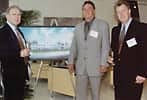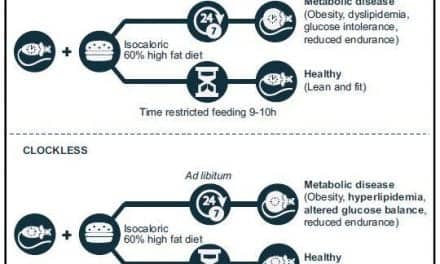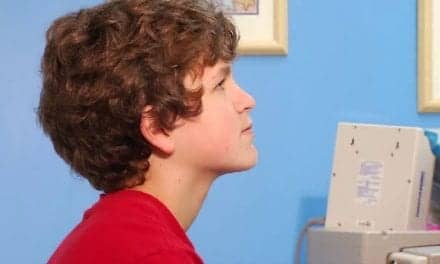An accurate history and physical examination, taking one or more questionnaires determining daytime sleepiness, and a visual assessment of facial anomalies help to accurately identify patients with a high probability of having sleep disordered breathing.
Polysomnography is an expensive, labor-intensive, and complex diagnostic procedure. It is used to diagnose a variety of sleep disorders, the most prevalent and potentially life-threatening of which is obstructive sleep apnea (OSA) or, more accurately, sleep disordered breathing (SDB).
Clearly, sending every patient to the sleep laboratory who complains of either difficulty sleeping or excessive daytime sleepiness (EDS) is a poor use of this valuable and limited resource. It lengthens queues and prolongs waiting time for patients who are in need of appropriate diagnosis and treatment. Every patient who leaves the sleep laboratory after a perfect night of sleep with little or no evidence of SDB conceivably displaces and prolongs the time required to test someone else in dire need of intervention. The most obvious solution to this problem is the development of prepolysomnography screening tools designed to include weighted parameters that return results indicating whether there is a high index of suspicion for SDB. We do not consider any one screening questionnaire or procedure as a panacea in this regard.
Because of their ease to administer and low cost, we employ a panel of indicators, which, when taken together, provide the evidence needed to predict with reasonable certainty that the patient in question is suffering from SDB. This brief review shall also describe some of these procedures that have been validated repeatedly over the past 5 years in our eight-bed sleep laboratory at Staten Island University Hospital-South in New York City.
Patient History and Physical Examination
The patient’s history and complaints form the basis of the initial contact with the physician or sleep laboratory concerning problems, real or perceived, that the patient or his sleeping partner may have. A thorough history and physical examination are recommended; however, there are certain key elements that point to an increased probability of SDB: complaints of EDS, nocturnal awakenings, waking with shortness of breath or feeling as if there was pressure on the chest, waking up to urinate two or more times during the sleep period, loud snoring where the patient hears himself, as well as complaints of snoring and breath holding observed by witnesses.
A thorough physical examination may reveal the following markers for SDB as well: being overweight; hypertension; an anatomically crowded posterior oropharynx; an enlarged and low-hanging uvula; an enlarged tongue and/or foreshortened or retrognathic jaw; other anatomical anomalies that limit the size of the oropharyngeal cavity; and a deviated nasal septum, particularly if the defect impinges on the lumen of both nostrils. We have developed a screening tool, which we ask our referring physicians and laboratory staff to carry out on patients who present with sleep-related complaints prior to being scheduled for an all-night polysomnography. This instrument consists of two short questionnaires, one of which is the Epworth Scale, a subjective rating of the patient’s own sleepiness, and a cursory examination of the posterior oropharynx with a flashlight, rating the lumen of the posterior airway using the Mallampati Scale.
No one factor or even a combination of factors is always 100% predictive for OSA, but the clinician can become sufficiently astute using these tools, the history, and physical examination to make a substantially accurate prediction that there is sufficient justification to send the patient for an attended, overnight polysomnography test under a prospective split night (2 to 3 hours of diagnosis followed by 2 to 3 hours of continuous positive airway pressure [CPAP] titration, if indicated). We achieved a positive prediction rate of 97% using these tools over a period of 1 year. Since patient populations tend to vary, centers need to validate these rating schemes on their own, along with positive markers obtained on the history and physical examination and determine at what point a positive prediction for OSA can be made in a particular case.
Home Sleep Studies
Limited four, six, or eight channel home studies have been advocated for the purpose of screening patients for sleep apnea. In some cases, they are used to determine the diagnosis and severity of sleep apnea. There are pros and cons to home studies being used to make a definitive diagnosis, and CPAP titration using autotitrating devices in the unattended home setting is all but impossible to accomplish properly. This equipment responds to apneas and hypopneas but no one, as yet, has invented an autotitrating CPAP machine that knows when a patient is asleep.
Patients who are awake may exhibit voluntary breath holds and diminution of breathing (false respiratory events) and the autotitrator responds to this by increasing the pressure level when, in fact, such an increase is not indicated. There is a variety of scaled-down polysomnography apparatus available for unattended, portable sleep testing.
Given the problems of getting a good sleep study and a CPAP titration in an unattended study with the patient often ending up getting an attended study for titration reasons, we believe that, for screening purposes, a home study adds an unnecessary layer of care, expense, and time delay to the resolution of the patient’s problem. Given the validity of the split-night protocol, clinicians are neither saving money or time, nor getting patients treated any faster, by ordering a home study prior to having an attended study for the purposes of CPAP titration anyway.
A fully diagnostic sleep study should cover a multitude of factors, which cannot be done by any one home sleep study system in an unattended mode. This includes not only four-channel electroencephalography to diagnose the presence of sleep, but also eye leads to help determine rapid eye movement, jaw and chin leads to determine muscle tone, automatic or manual patient position markers, electrocardiography, leg leads to determine whether there is true periodic limb movement disorder or leg movements secondary to respiratory events, as well as oxygen saturation measured via pulse oximetry, nasal/oral airflow measurement (using pressure transduction), and thoracoabdominal belts to help differentiate between obstructive, mixed, or central apneas. Central apneas can be just as harmful as obstructive apneas but require an entirely different approach. Again, autotitrating CPAP machines cannot determine the nature of the respiratory event with specificity. Unless or until there is a foolproof way to provide at-home unattended studies that accurately collect at least 16 channels of this type of data, there is little point in using limited channel devices just for screening purposes when one can successfully screen a patient with a few short questionnaires, an history and physical examination, and a flashlight. And then one still has to bring the OSA-positive patient in for the other half of the equation: the CPAP titration.
Screening Gadgets
Over the past few years, a variety of simple, relatively inexpensive gadgets have been developed, which are designed to predict, in the absence of polysomnography, whether a patient has this condition. In the absence of a competent medical evaluation and in areas where there is a shortage of sleep testing facilities, such devices might serve to help triage and prioritize patients in getting to the sleep laboratory for regular testing.
Sleep Strip™
This self-testing device is known familiarly as the “sleep mustache” and is based on the design of the adhesive thermistor type nasal/oral airflow sensor. The device is activated and pasted over the upper lip. In the morning, the severity of OSA is determined by reading a dot code in the printed circuit embedded in the device.
Snap™ Testing
This technique relies on a combination of overnight, at-home unattended audio recording of the patient’s breathing and snoring during sleep, sometimes coupled with pulse oximetry. The developer of this technique maintains proprietary control over it, and gives testing units to selected physicians’ offices. Test results need to be sent back to Snap for “scoring” (acoustic analysis) and the referring physician interprets the results. Although we have occasionally seen Snap reports in patient charts referred to our laboratory, the developer of this equipment has consistently refused to respond to requests from these authors for more information. They seemingly determine the severity of patients’ SDB based on their own weighting of the respiratory sounds they record and, evidently, on accompanying pulse oximetry changes. This test may be particularly well suited for objective pre- and post-operative snore sound level determination following surgery to reduce or eliminate snoring.
Cephalometric Radiography
Another important screening tool is the use of a head x-ray performed in such a manner that it permits standardized measurements of the skeletal elements and spaces.
Patients complaining of symptoms of SDB often have distinctive variations in the standard measurements in a left laterally performed x-ray of the head. These include a narrowing of the posterior airway space and a decrease (to less than 80°) in the angles of the maxillary bone and mandible. Cephalometry is often used to determine whether corrective facial surgery is indicated as a means to correct sleep disordered breathing.
Standardized Questionnaire
The Epworth Sleepiness Scale was developed by Murray Johns at the Sleep Center at Epworth Hospital in Melbourne, Australia. It is an eight-question questionnaire that asks respondents to rate, on a scale of 0 to 3, the chance of dozing in the situations stated. Zero would equal never dozing; 1 equals a slight chance of dozing; 2 equals a moderate chance; and 3 equals a high chance of dozing. The situations stipulated are:
1. Sitting and reading.
2. Watching television.
3. Sitting inactive in a public place such as a theater or meeting.
4. Sitting as a passenger in a car for an hour or more without a break.
5. Lying down to read in the afternoon.
6. Sitting and talking to someone.
7. Sitting quietly after lunch (when you have had no alcohol).
8. Sitting in a car when stopped in traffic.
Although some of these questions may have greater importance than others, the overall scores are totaled. Less than eight means you are not really suffering from EDS, between eight and 12 indicates moderate sleepiness, whereas a score of 12 or more is considered pathologic sleepiness in need of immediate testing and treatment.
A variety of other questionnaires have been devised, and some laboratories have developed and validated their own questionnaires, tailoring them to the cultural and occupational aspects of the populations they serve.
Conclusion
Although there are a variety of gadgets and limited home sleep testing available for screening purposes, after 5 years of experience, we believe that an accurate history and physical examination, one or more questionnaires designed to subjectively inventory daytime sleepiness, a cursory examination of the posterior oropharynx with a penlight, and a visual (followed by x-rays) assessment of facial anomalies are sufficient in most cases to accurately identify patients with a high probability of having SDB.
Thomas M. Kilkenny, DO, FAASM, is medical director; Steve Grenard, RRT, is research coordinator; and Mark Honor, PA, RPSGT, is a sleep medicine physician’s assistant, all at the Sleep Apnea Center at Staten Island University Hospital, New York.




